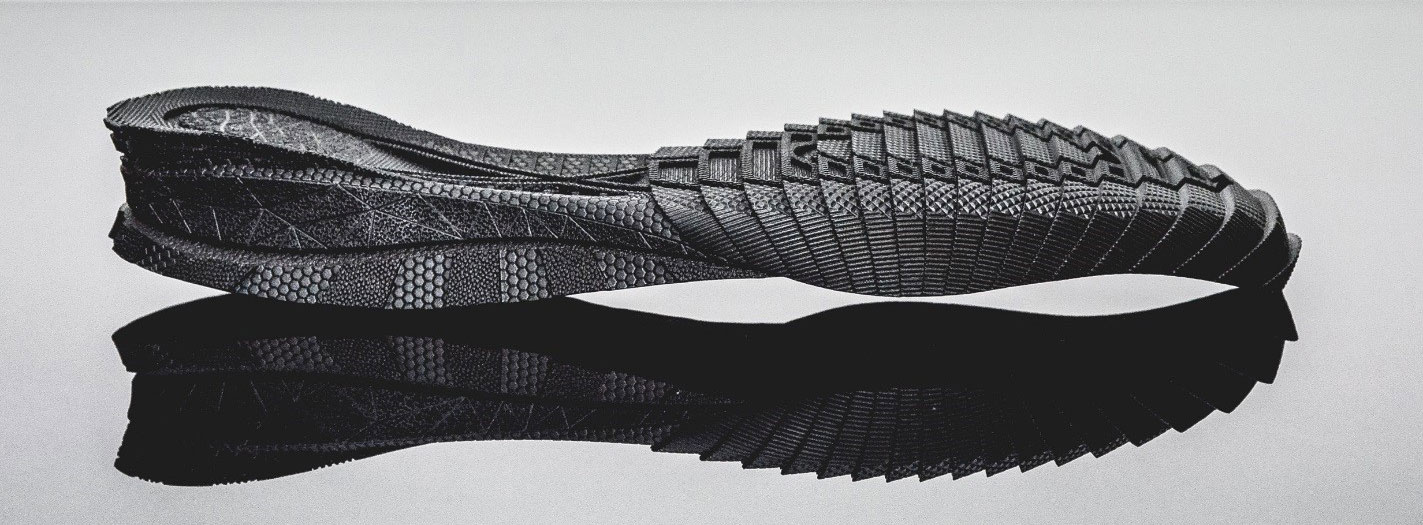Challenge
Create a highly detailed master (including 453 textured surfaces) for casting a shoe sole
Solution
Apply mass texturing instead of 1-by-1 texturing
Insight/How
Texturing, data preparation, automated support generation, slice-based technology
Industry
Shoe manufacturing industry (consumer goods)
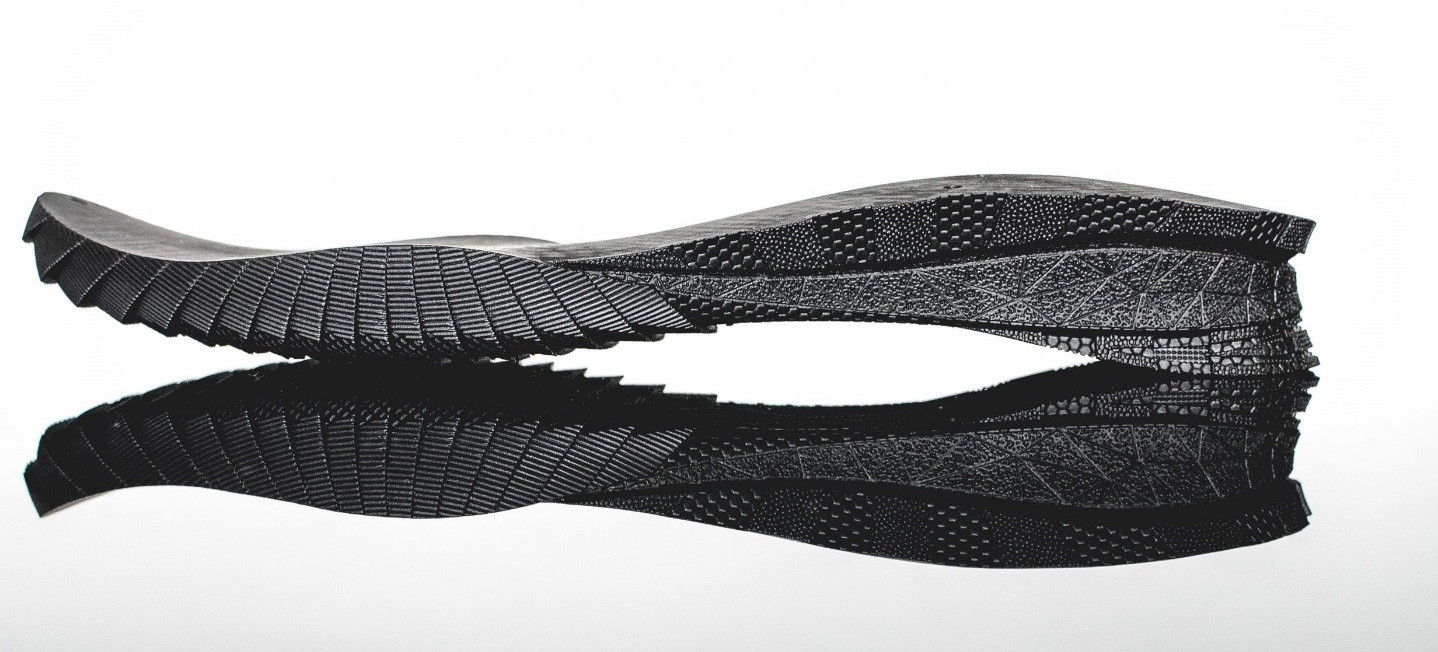
This shoe sole, 3D printed in Stereolithography by Materialise, provides shoe manufacturers with a detailed master for casting.
A 3D-Printed, Textured Master for Casting
Discover how four solutions from the Materialise software backbone give shoe manufacturers a shortcut to repair the worst file errors, texture hundreds of surfaces, automatically generate support and finally keep those huge data sets manageable.
Texturing: 80% Time Savings
Applying textures one by one demands massive amounts of time when you need to texture around 1,000 surfaces. With the texturing module of Materialise 3-matic, hundreds of surfaces that need the same type of texture can be grouped in surface sets and textured with one click. In this shoe sole 453 surfaces were nicely textured and aligned, saving at least 80% of time compared to 1-by-1 texturing.
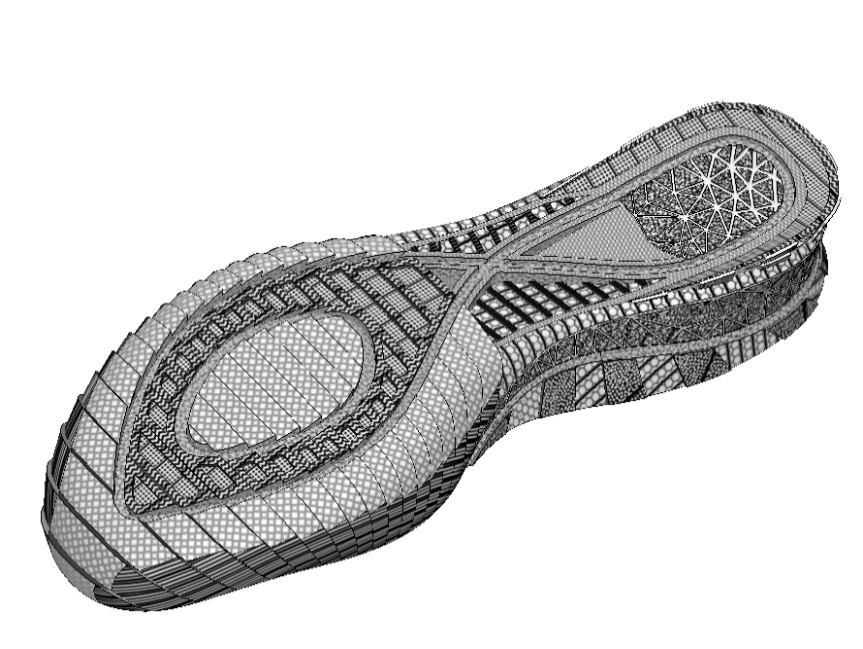
Data preparation: Automatically Repair
To print the shoe in the most cost-efficient way, we created a hollow version of the model and added holes for resin drainage. In addition, Materialise Magics was used to position the shoe sole on the build platform in an optimal way.
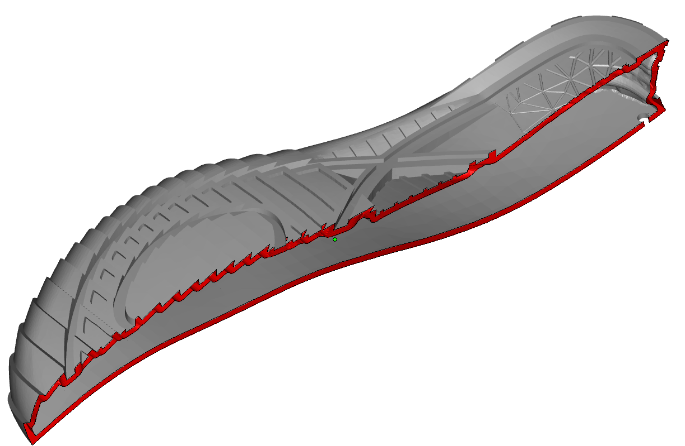
Automatic Support Generation: Save 20 min per Part
Manually generating support is a very labor-intensive job. With automated support generation tool e-Stage, the support preparation time was significantly reduced. Using Materialise e-Stage can reduce data preparation time up to 20 minutes per part, depending on the complexity and size of the part. The support was not limited to the outside, but also supported certain hollow regions inside the shoe. Thanks to minimal contact points, the finishing time was reduced as well.
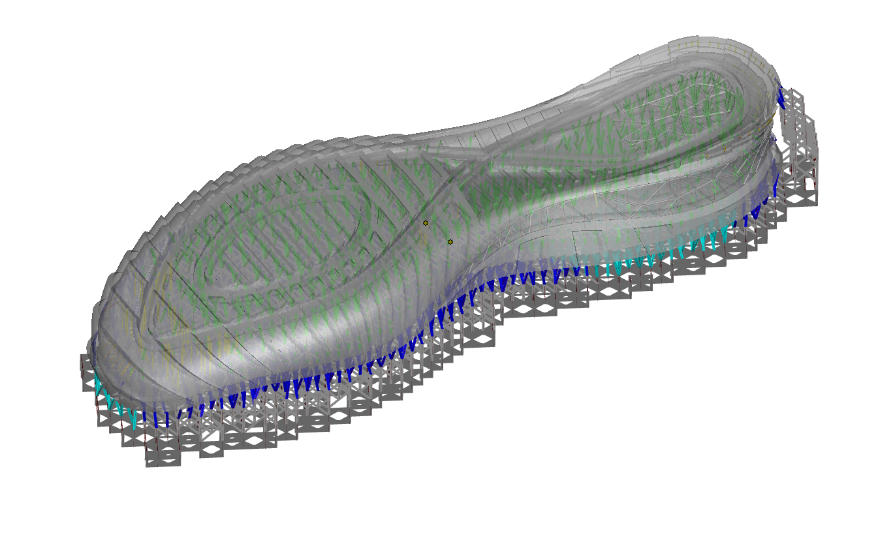
Slice-Based Data Processing: 5.8 MB Instead of 2 GIG
Applying textures or structures to a model can easily result in very large STL files which become difficult to manipulate, store and transfer. Thanks to the slice-based technology of the Build Processor, the demanding triangle creating to an intermediate STL file was skipped and the desired geometry was generated directly onto the slices, avoiding large data. 453 surfaces where textured on a 5.8 MB size STL file, resulting in a slice stack of only 50 MB. Thanks to the slice-base technology an STL file of around 2 GB could be avoided.
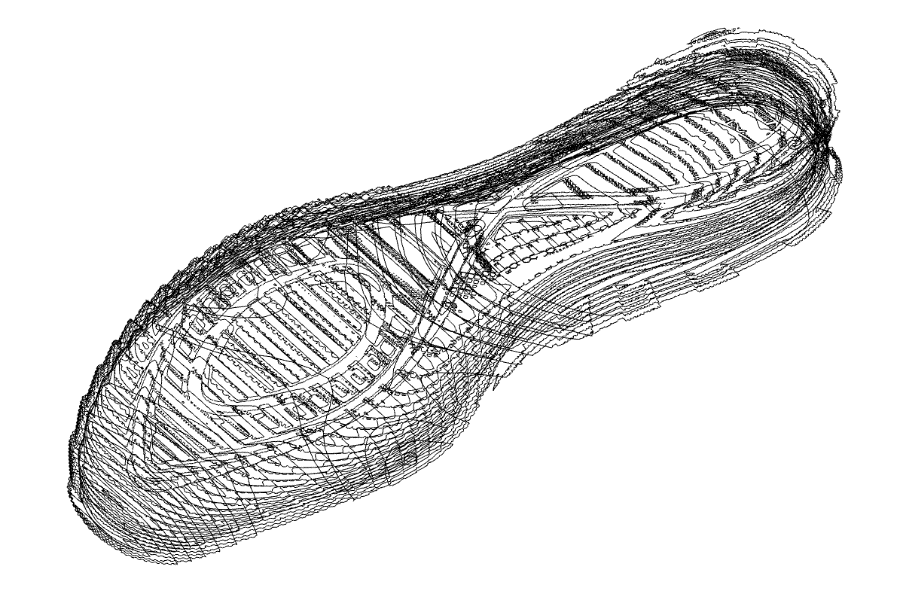
The final result was this stunning textured master!
